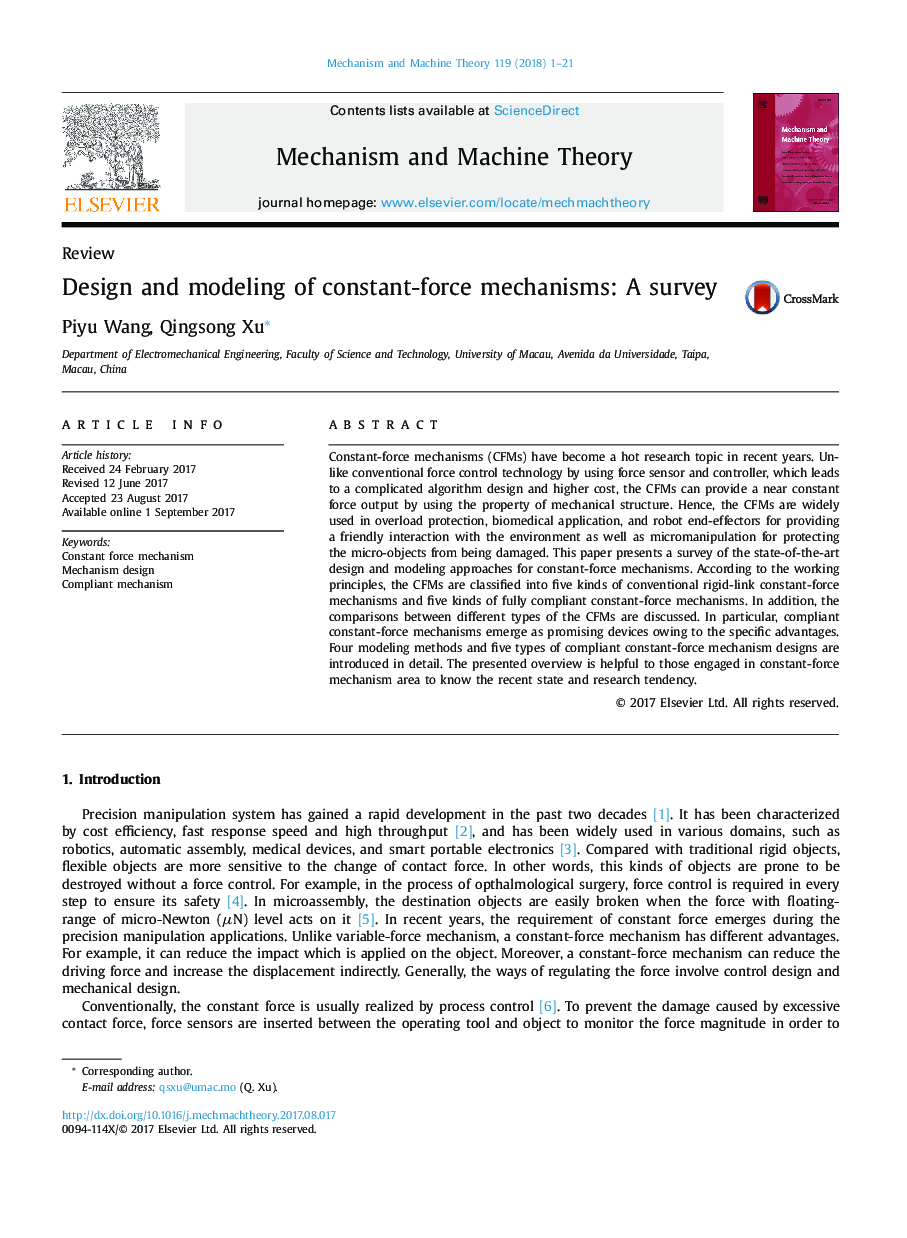| Article ID | Journal | Published Year | Pages | File Type |
|---|---|---|---|---|
| 5018811 | Mechanism and Machine Theory | 2018 | 21 Pages |
â¢The state-of-the-art design and modeling approaches of constant-force mechanisms are surveyed.â¢Both rigid-body and fully-compliant constant-force mechanisms are reviewed.â¢working principles, design methods, modeling approaches, pros and cons are introduced.â¢Four modeling methods and five compliant constant-force mechanism designs are outlined.â¢It is helpful to those engaged in constant-force mechanism area to know the recent state and research tendency.
Constant-force mechanisms (CFMs) have become a hot research topic in recent years. Unlike conventional force control technology by using force sensor and controller, which leads to a complicated algorithm design and higher cost, the CFMs can provide a near constant force output by using the property of mechanical structure. Hence, the CFMs are widely used in overload protection, biomedical application, and robot end-effectors for providing a friendly interaction with the environment as well as micromanipulation for protecting the micro-objects from being damaged. This paper presents a survey of the state-of-the-art design and modeling approaches for constant-force mechanisms. According to the working principles, the CFMs are classified into five kinds of conventional rigid-link constant-force mechanisms and five kinds of fully compliant constant-force mechanisms. In addition, the comparisons between different types of the CFMs are discussed. In particular, compliant constant-force mechanisms emerge as promising devices owing to the specific advantages. Four modeling methods and five types of compliant constant-force mechanism designs are introduced in detail. The presented overview is helpful to those engaged in constant-force mechanism area to know the recent state and research tendency.
